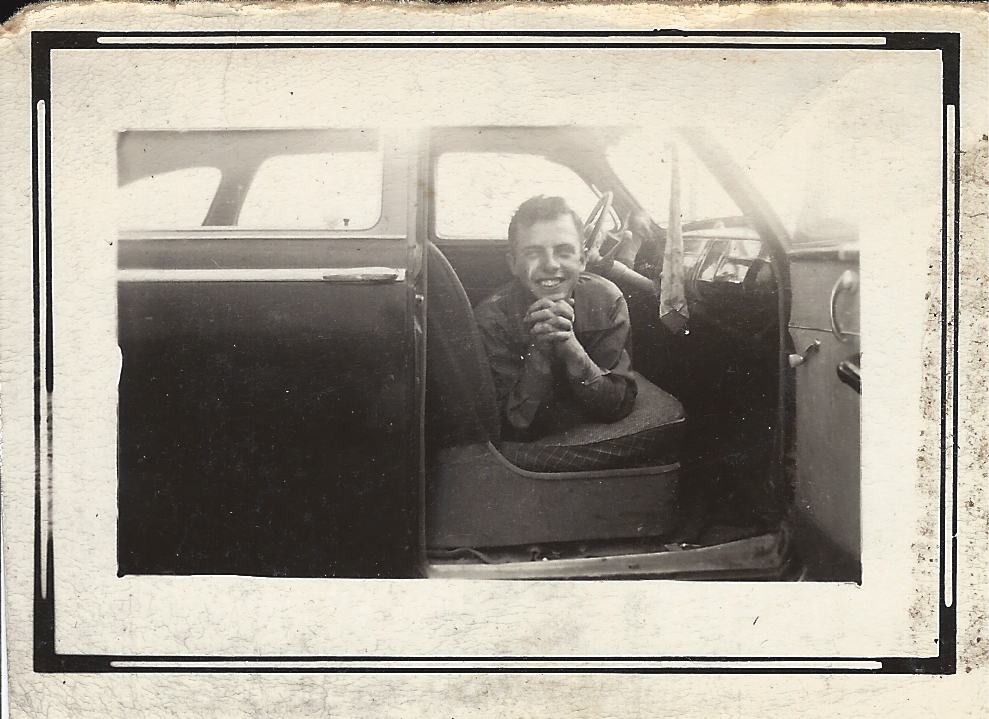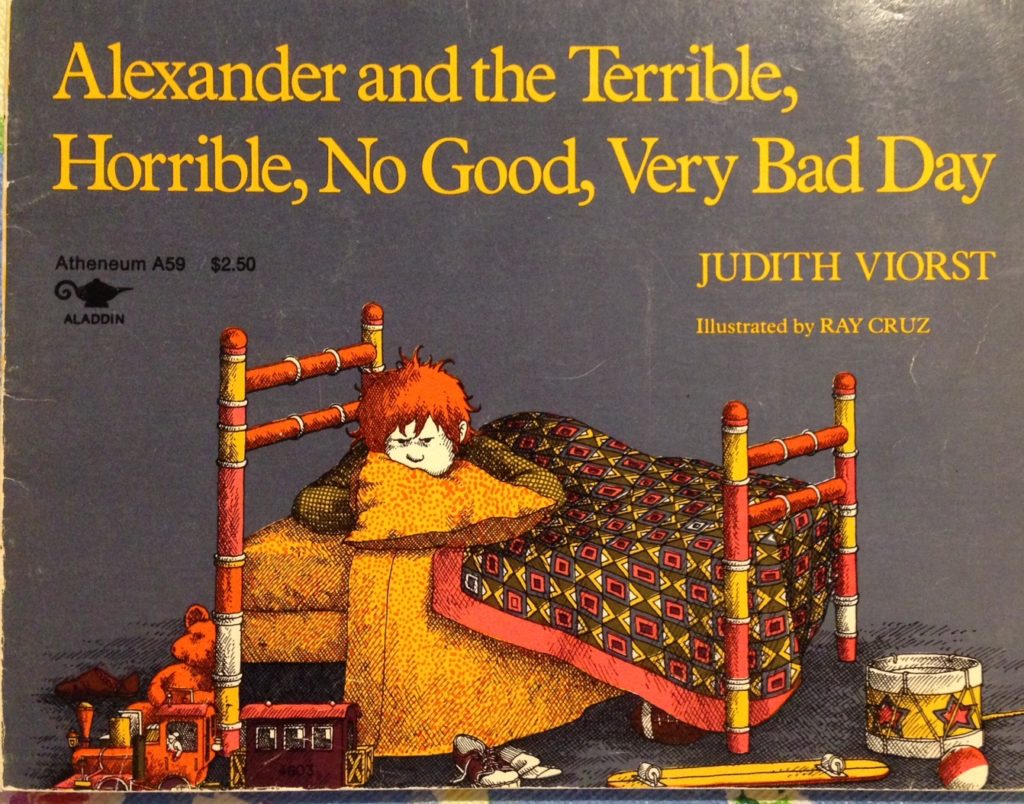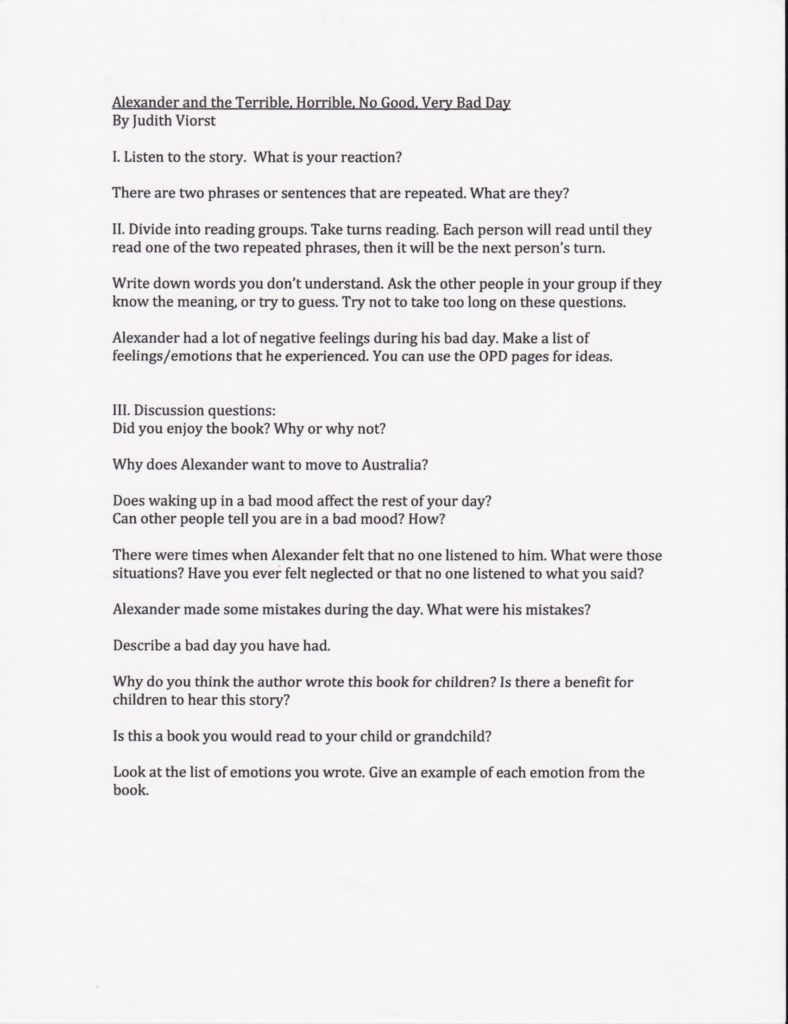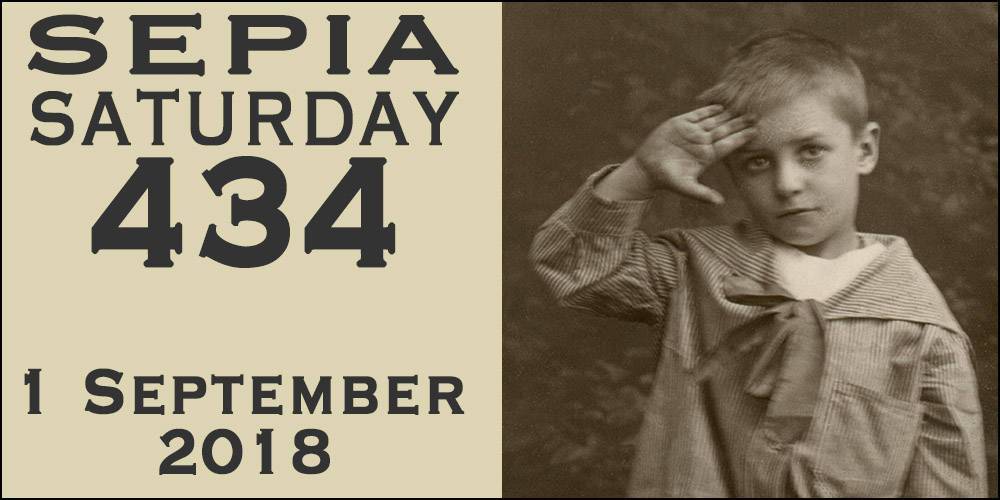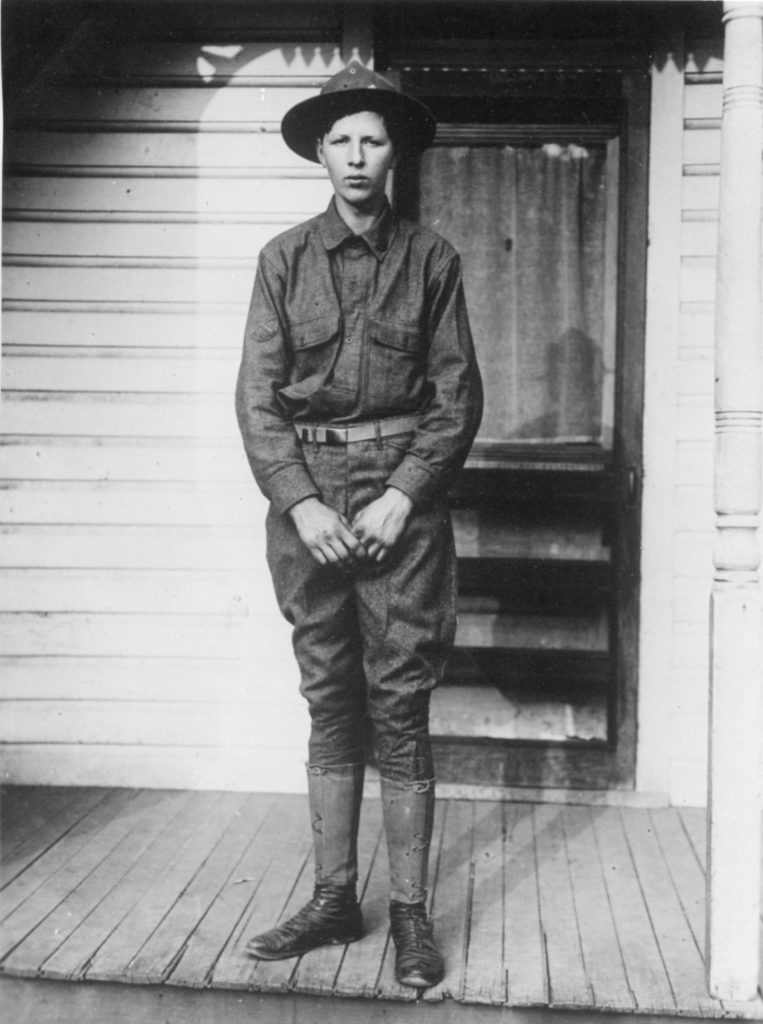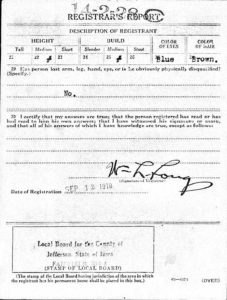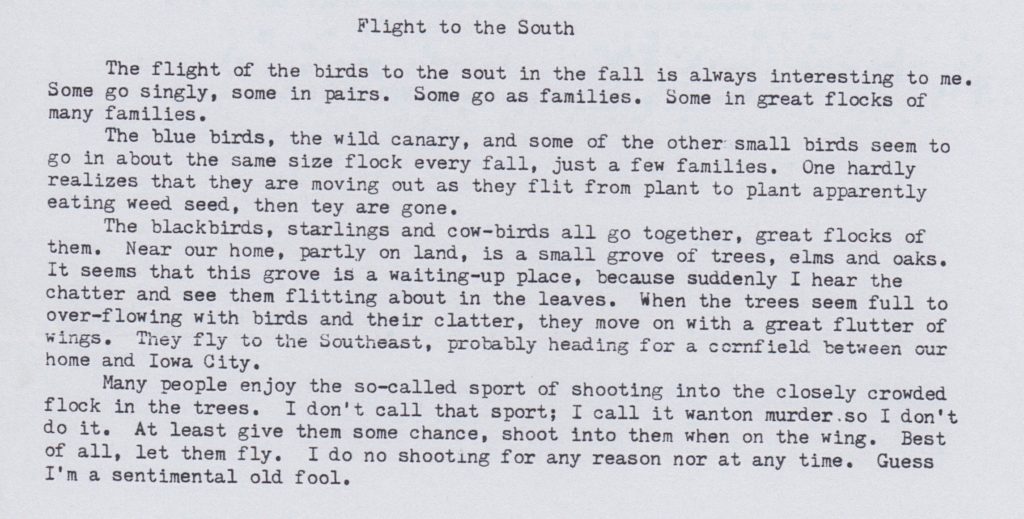Sepia Saturday provides bloggers with an opportunity to share their history through the medium of photographs.
I had to take a break from participating in Sepia Saturday. Two kids moved out of state in the month of September and we inherited a big grand-dog – and I can’t remember what else, but that was enough to keep me away. I didn’t realize the photo I’ve been thinking about was the prompt for last week! Oh well. I’m going with it anyway. I’m just 10 days late.
The prompt photo is titled “The Family Car” and features some men washing and shining up their vehicle. For some reason, it reminded me of this …
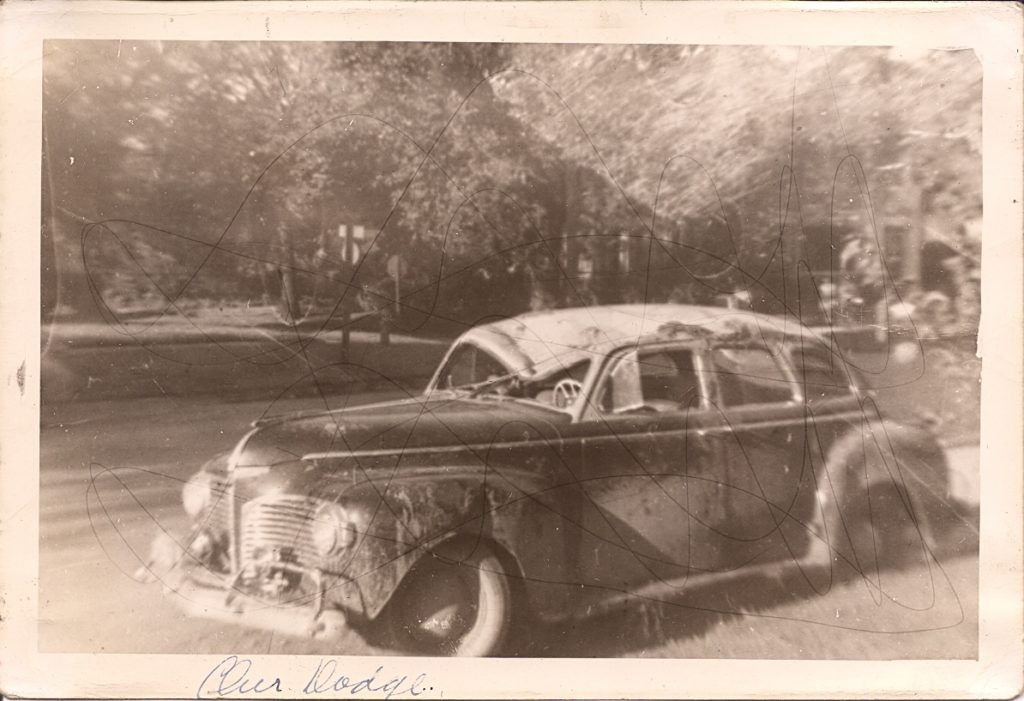
My Grandmother wrote “Our Dodge” on this photograph. What happened to the family car?
I called my dad(Jerry) and asked him to tell me. He began by saying that only four people ever knew what happened. At least two of those people are deceased and Dad has now broken his promise never to tell.
The car in question was a 1941 two-tone maroon Dodge. Dad said that my grandfather, Charles Smith, never bought anything brand new, but remembers the car as being “pretty new” when they got it. My little peek around the internet suggests it was a 1941 Two Tone Luxury Liner Town Sedan.
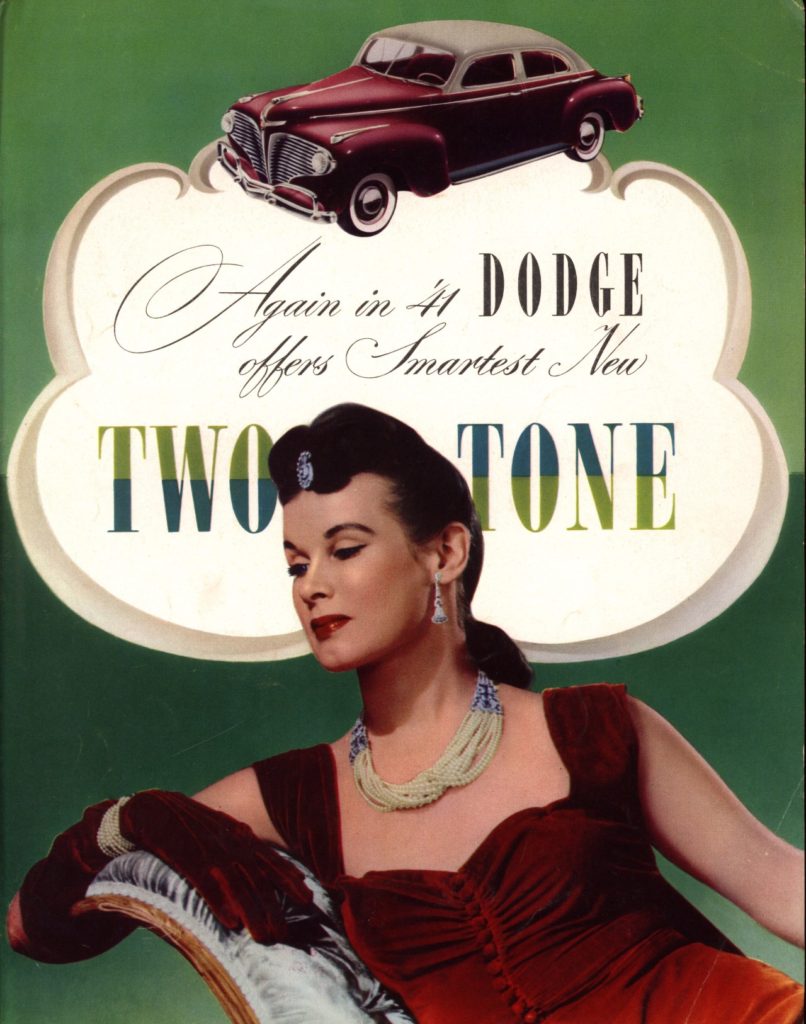
One must have felt very fancy in the smartest new two tone!
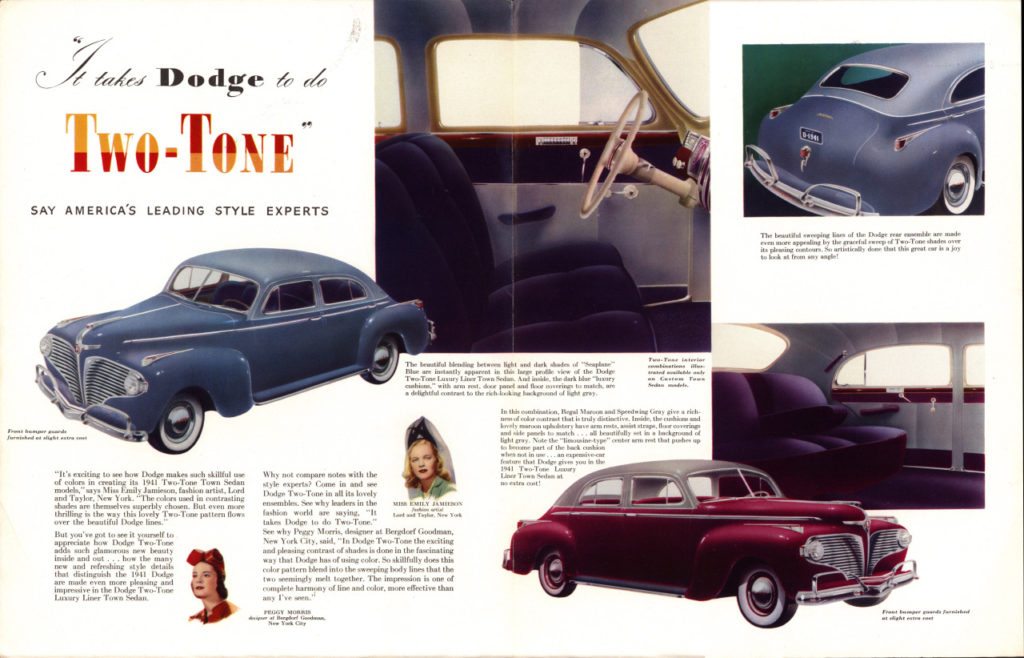
“In this combination, Regal Maroon and Speedwing Gray give a richness of color contrast that is truly distinctive. Inside, the cushions and lovely maroon upholstery have arm rests, assist straps, floor coverings and side panels to match … all beautifully set in a background of light gray.”
I can just feel those luxurious seats, can’t you?
“Front bumper guards furnished at slight extra cost.” Not only did this car have the front bumper guards, it also had low lamps. Fancy!
My dad’s brother, Mike, took his girlfriend for a drive in the family car. The Smith family lived on a farm near Packwood, Iowa, and Mike was in high school. Perhaps to please his girlfriend (we’ll never know that part of the story), Uncle Mike let her drive.
In those days, even the “main” roads between small Iowa towns were gravel roads. The girlfriend “lost control, went over the side and rolled it,” as Dad tells the story.
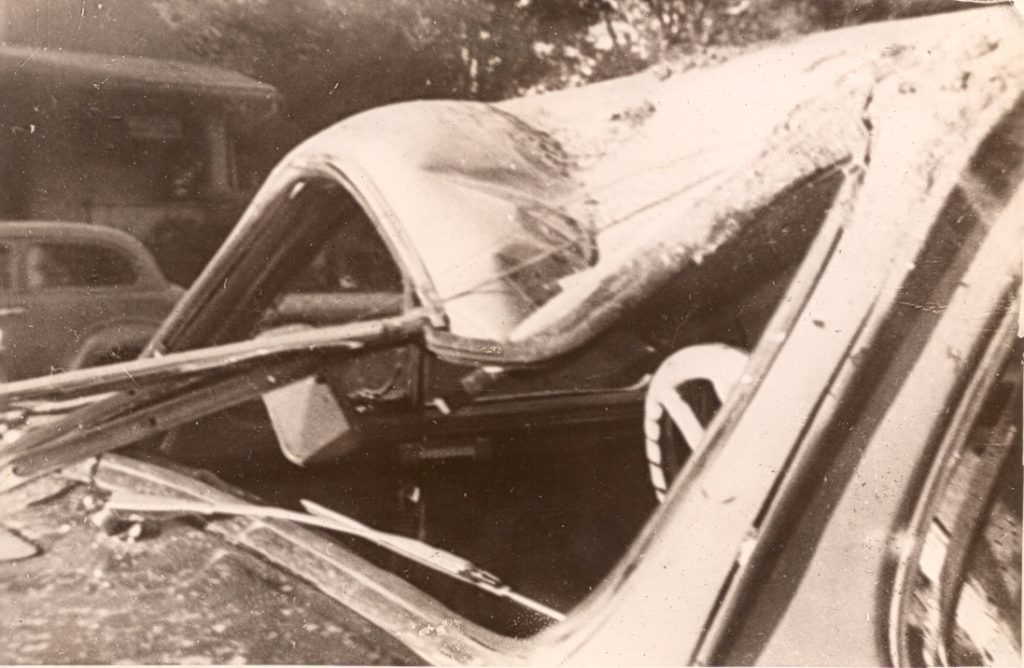
Thankfully, no one was hurt.
In this last photo of the series, Grandma Abbie wrote, “After the top had been pried up.”
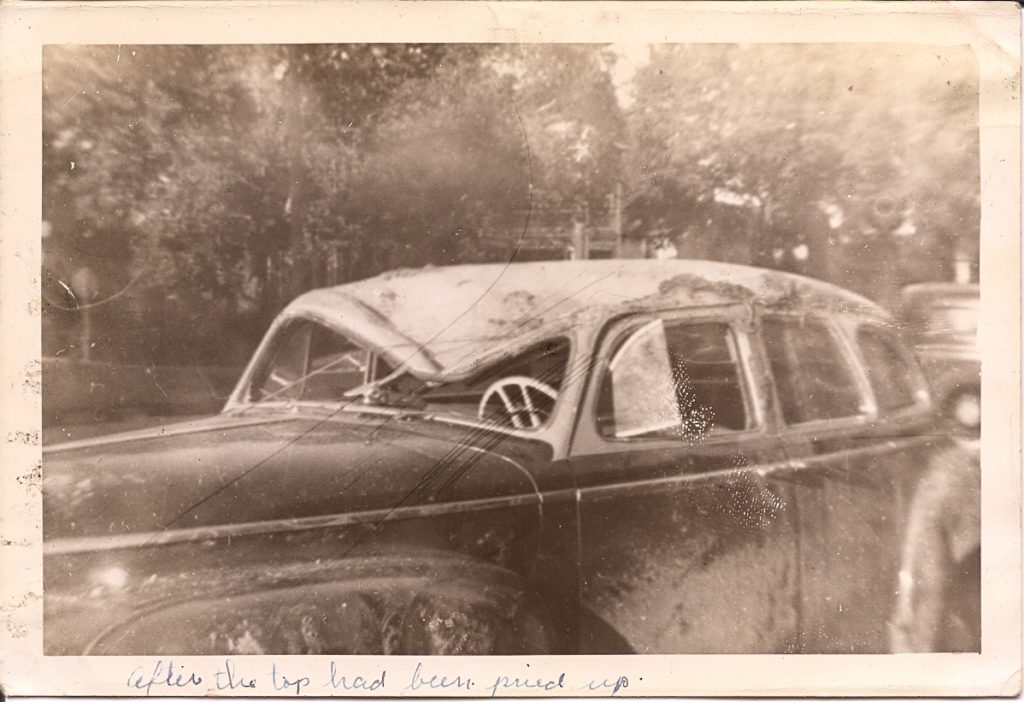
Yikes! How bad was it before the top was pried up?
Uncle Mike told his mother what happened, but everyone agreed not to tell his father that Mike let his girlfriend drive the car. Dad thinks my grandpa drove the car to Iowa City and it was repaired at a body shop there.
A few years later my Grandpa had to sell the car to save the farm. It was fun while it lasted…
This is my offering for Sepia Saturday. Please visit others who participated this week – but will be responding to an entirely different prompt!
- Story told to me 9/30/2018


